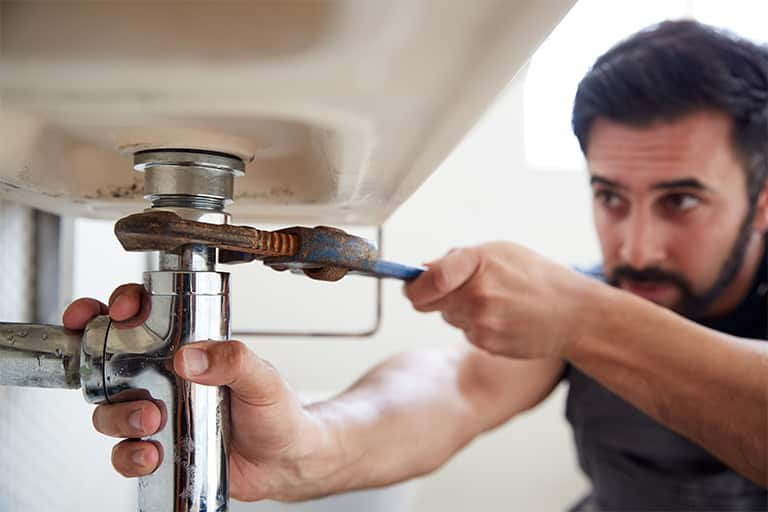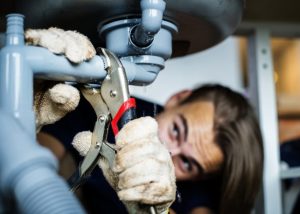Overview To Water Leakage Discovery In The House
Overview To Water Leakage Discovery In The House
Blog Article
This article following next involving Detecting hidden plumbing leaks is indeed remarkable. You should take a look.

Early discovery of dripping water lines can reduce a potential catastrophe. Some small water leaks might not be visible.
1. Examine the Water Meter
Every residence has a water meter. Inspecting it is a proven way that helps you find leakages. For beginners, shut off all the water sources. Ensure nobody will flush, utilize the faucet, shower, run the washing machine or dishwashing machine. From there, go to the meter and also watch if it will alter. Because nobody is utilizing it, there must be no movements. That suggests a fast-moving leakage if it relocates. Likewise, if you spot no changes, wait an hour or more and check back again. This means you might have a sluggish leak that could also be underground.
2. Examine Water Usage
Assess your water costs and also track your water consumption. As the one paying it, you should notice if there are any kind of discrepancies. If you identify sudden changes, despite your usage being the same, it implies that you have leaks in your plumbing system. Keep in mind, your water expense ought to drop under the same range each month. An unexpected spike in your bill suggests a fast-moving leak.
A steady boost every month, also with the very same behaviors, reveals you have a slow-moving leak that's also slowly intensifying. Call a plumber to completely examine your residential property, especially if you feel a warm area on your floor with piping beneath.
3. Do a Food Coloring Test
When it comes to water intake, 30% comes from bathrooms. If the shade in some way infiltrates your dish throughout that time without flushing, there's a leakage between the storage tank as well as dish.
4. Asses Exterior Lines
Don't fail to remember to inspect your exterior water lines also. Should water permeate out of the link, you have a loose rubber gasket. One little leakage can waste tons of water and spike your water bill.
5. Evaluate and also Analyze the Scenario
Homeowners need to make it a practice to check under the sink counters and also also inside cabinets for any bad odor or mold and mildew development. These two warnings suggest a leakage so timely attention is required. Doing regular evaluations, even bi-annually, can conserve you from a major issue.
If you know your residence is currently old, keep a careful eye on your heating units, pipes, pipelines and so on. Look for stainings as well as compromising as many pipes and also appliances have a life expectancy. They will also naturally degrade because of tear as well as put on. If you believe dripping water lines in your plumbing system, don't wait on it to rise. Call a professional plumber immediately so you don't wind up with a horrible mess in your home.
Early discovery of leaking water lines can reduce a possible calamity. Some little water leakages might not be visible. Inspecting it is a proven means that helps you uncover leakages. One little leak can squander lots of water as well as spike your water costs.
If you suspect leaking water lines in your plumbing system, do not wait for it to escalate.
WARNING SIGNS OF WATER LEAKAGE BEHIND THE WALL
PERSISTENT MUSTY ODORS
As water slowly drips from a leaky pipe inside the wall, flooring and sheetrock stay damp and develop an odor similar to wet cardboard. It generates a musty smell that can help you find hidden leaks.
MOLD IN UNUSUAL AREAS
Mold usually grows in wet areas like kitchens, baths and laundry rooms. If you spot the stuff on walls or baseboards in other rooms of the house, it’s a good indicator of undetected water leaks.
STAINS THAT GROW
When mold thrives around a leaky pipe, it sometimes takes hold on the inside surface of the affected wall. A growing stain on otherwise clean sheetrock is often your sign of a hidden plumbing problem.
PEELING OR BUBBLING WALLPAPER / PAINT
This clue is easy to miss in rooms that don’t get much use. When you see wallpaper separating along seams or paint bubbling or flaking off the wall, blame sheetrock that stays wet because of an undetected leak.
BUCKLED CEILINGS AND STAINED FLOORS
If ceilings or floors in bathrooms, kitchens or laundry areas develop structural problems, don’t rule out constant damp inside the walls. Wet sheetrock can affect adjacent framing, flooring and ceilings.
https://www.servicemasterbyzaba.com/blog/how-to-detect-water-leakage-in-walls/

I stumbled upon that post on Detecting hidden plumbing leaks when surfing the search engines. Appreciated our blog? Please share it. Let somebody else locate it. We cherish reading our article about Top leak detection hacks.
Report this page